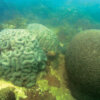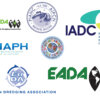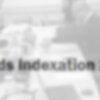Numerous international, national and local agencies, commissions and organisations are in place to regulate maritime and dredging activities.
Regulatory bodies
International Maritime Organization - IMO
The United Nations’ International Maritime Organization is probably the broadest agency that covers all types of maritime activities. As summarised in Article 1(a) of the Convention, the purposes of the IMO are “to provide machinery for cooperation among Governments in the field of governmental regulation and practices relating to technical matters of all kinds affecting shipping engaged in international trade; to encourage and facilitate the general adoption of the highest practicable standards in matters concerning maritime safety, efficiency of navigation and prevention and control of marine pollution from ships”, that is, all sea-faring vessels as well as dredging vessels. The IMO has been responsible for creating a number of regulatory Conventions which apply to various aspects of maritime activities.
International Organization For Standardization - ISO
The International Organization For Standardization (ISO) is the world’s largest developer of standards. It is a network of national standards institutes from more than 160 countries working in partnership with international organisations, governments, and industry, business and consumer representatives. It forms a bridge between the public and private sectors. ISO Standards on many areas, including safety, are applicable to the dredging industry and most major dredging companies adhere to these international standards.
United Nations Environment Programme - UNEP
In 1974, the United Nations Environment Programme (UNEP) launched a Regional Seas Programme. The UNEP Regional Seas Programme has emerged over the last 35 years as the prime example of how to craft a regional approach to protecting the environment and managing natural resources. The Regional Seas Conventions and Action Plans cover issues ranging from chemical wastes and coastal development to the conservation of marine animals and ecosystems.
More than 143 countries participate in 13 Regional Seas programmes established under the auspices of UNEP.
Agencies
A characteristic of the international agreements described above is that signatories to them must identify suitable agencies or departments within their national governments to implement the recommendations and protocols of the conventions.
These departments must also develop compatible environmental protection in their national legislation. Thus, for example, a country’s Environmental Protection Agency might be tasked with developing the framework for assessing the management of dredged material in accordance with the Dredged Material Assessment Framework. As a result, numerous national and supranational agencies have formed over the course of time.
Commissions
European Commission - EC
The European Commission is the executive arm of the European Union (EU) and promotes the interest of EU members, including maritime and dredging subjects.
The European Commission, acting on behalf the EU member states, issues directives with which these countries are required to comply. Some of these directives affect dredging. For instance, the following directives impact directly on dredging and placement activities:
- The Water Framework Directive: The Water Framework Directive was first implemented in 2000 and established a framework for the members of the European Union in the development of water policy. It committed all European Union member states to strive to achieve good qualitative and quantitative status of all water bodies, including marine waters up to one nautical mile from shore. An important aspect of this directive was to establish a single system of water management by establishing river basin districts, since rivers and their basins often traverse national frontiers. Part of the most recent actions is that a number of older, "first wave" directives will be replaced and a new "river basin management plan" will be established and updated every six years.
- The Waste Framework Directive sets out measures addressing the adverse impacts of the generation and management of waste on the environment and human health, and for improving efficient use of resources which are crucial for the transition to a circular economy. The Directive sets the basic waste management concepts and definitions such as those of waste, recycling and recovery. The Directive lays down some basic waste management principles, e.g., the requirement that waste be managed without endangering human health and harming the environment, and in particular without risk to water, air, soil, plants or animals, without causing a nuisance through noise or odours, and without adversely affecting the countryside or places of special interest. It introduces the “polluter pays principle” and the “extended producer responsibility”.Companies that produce, import or supply articles containing Candidate List substances have to submit information on these articles placed on EU market to the SCIP database, as from 5 January 2021. These articles can be produced in the EU or imported from non-EU countries.
- The Habitats Directive and Birds Directive: The Habitats Directive ensures the conservation of a wide range of rare, threatened or endemic animal and plant species. Some 200 rare and characteristic habitat types are also targeted for conservation in their own right. First adopted in 1992, the this Directive on the conservation of natural habitats and of wild fauna and flora aims to promote the maintenance of biodiversity, taking account of economic, social, cultural and regional requirements. It forms the cornerstone of Europe's nature conservation policy with the Birds Directive and establishes the EU wide Natura 2000 ecological network of protected areas, safeguarded against potentially damaging developments.
Subjects
Regulatory Bodies, Agencies, Commissions and Organisations
-
 Conventions
Conventions
-
 IADC Dredging in Figures Committee
IADC Dredging in Figures Committee
-
 Dredging and Related Organisations
Dredging and Related Organisations
-
 Financial Institutes & Lending Agencies
Financial Institutes & Lending Agencies
-
 IADC Sustainability Committee
IADC Sustainability Committee
-
 IADC Indexation Cost Standards Committee
IADC Indexation Cost Standards Committee
-
 IADC Legal Committee
IADC Legal Committee
-
 IADC Public Relations Committee
IADC Public Relations Committee
-
 IADC Registered Plant Committee
IADC Registered Plant Committee
-
 IADC Safety Committee
IADC Safety Committee
-
 United Nations Environmental Programme (UNEP)
United Nations Environmental Programme (UNEP)





